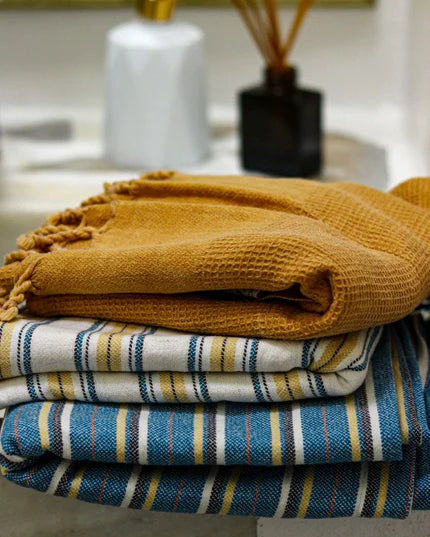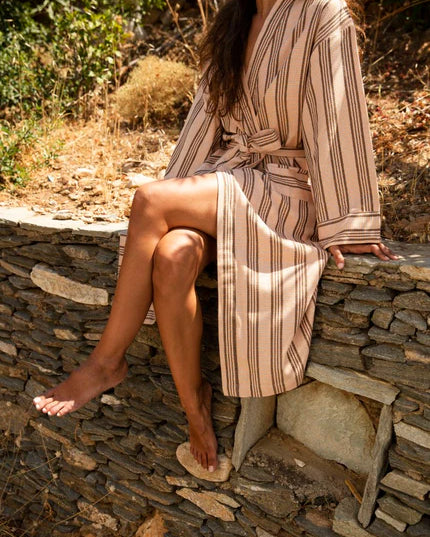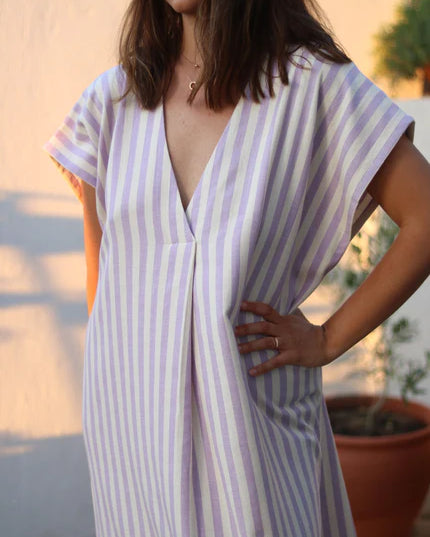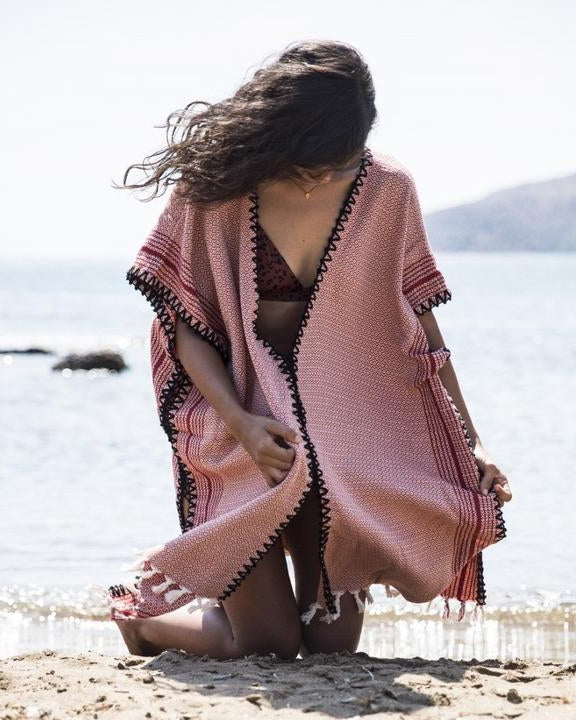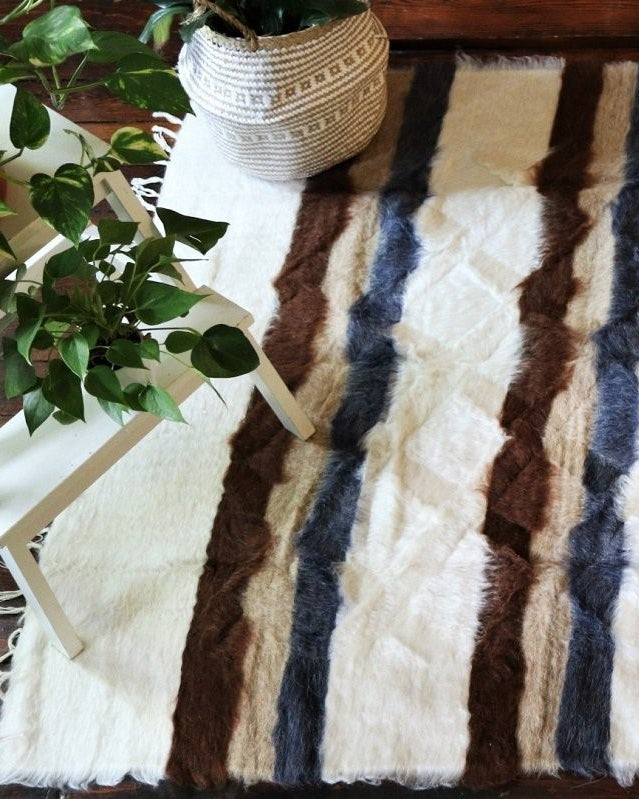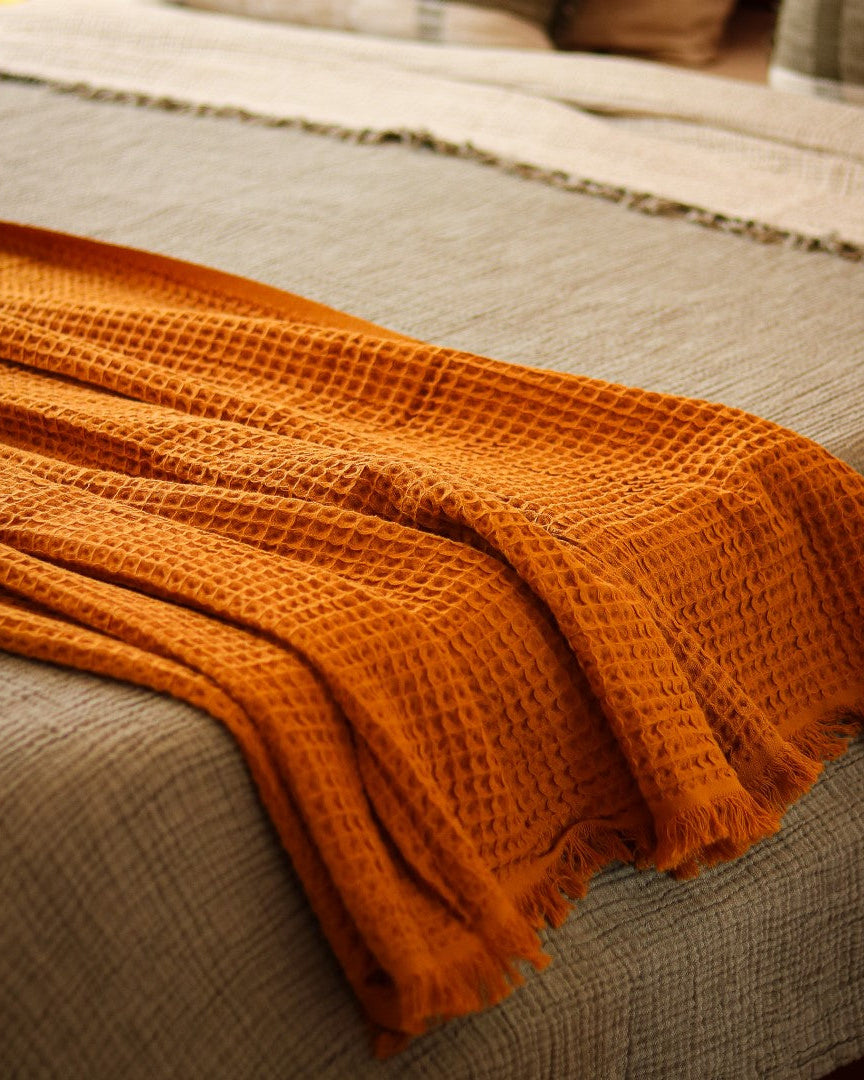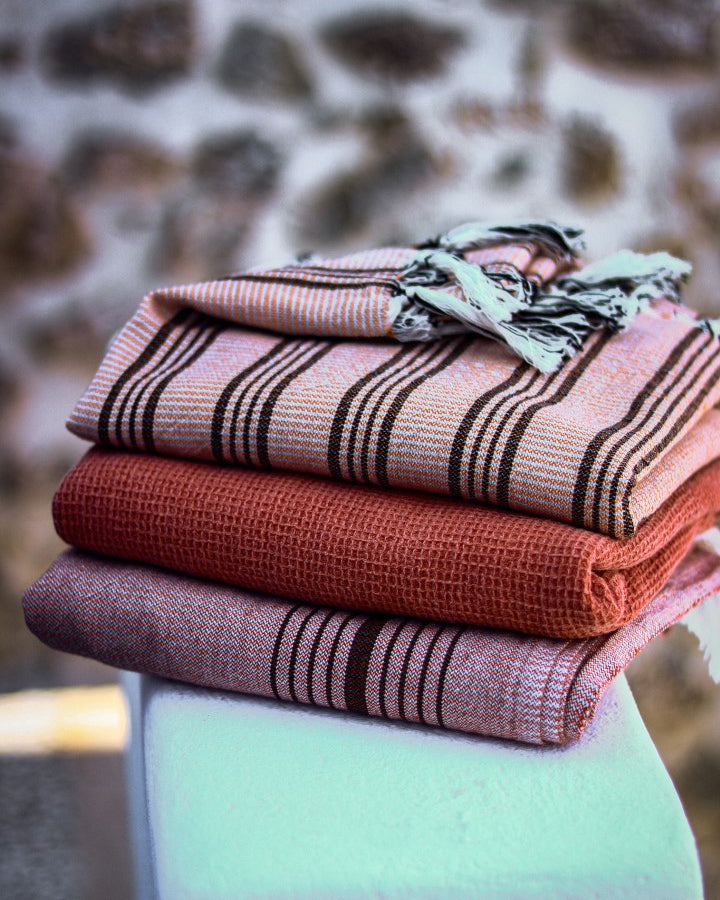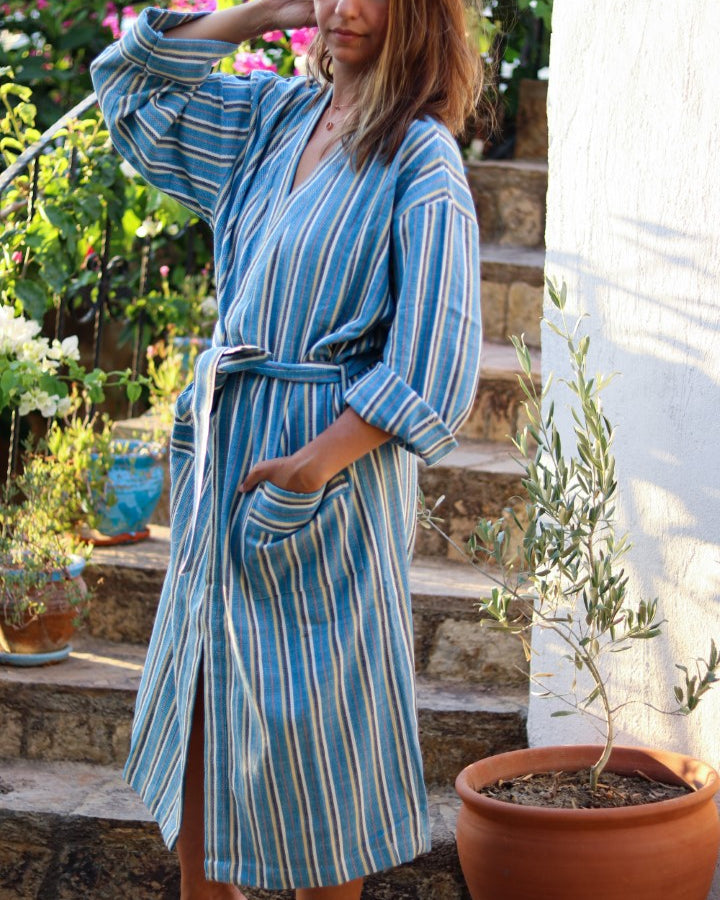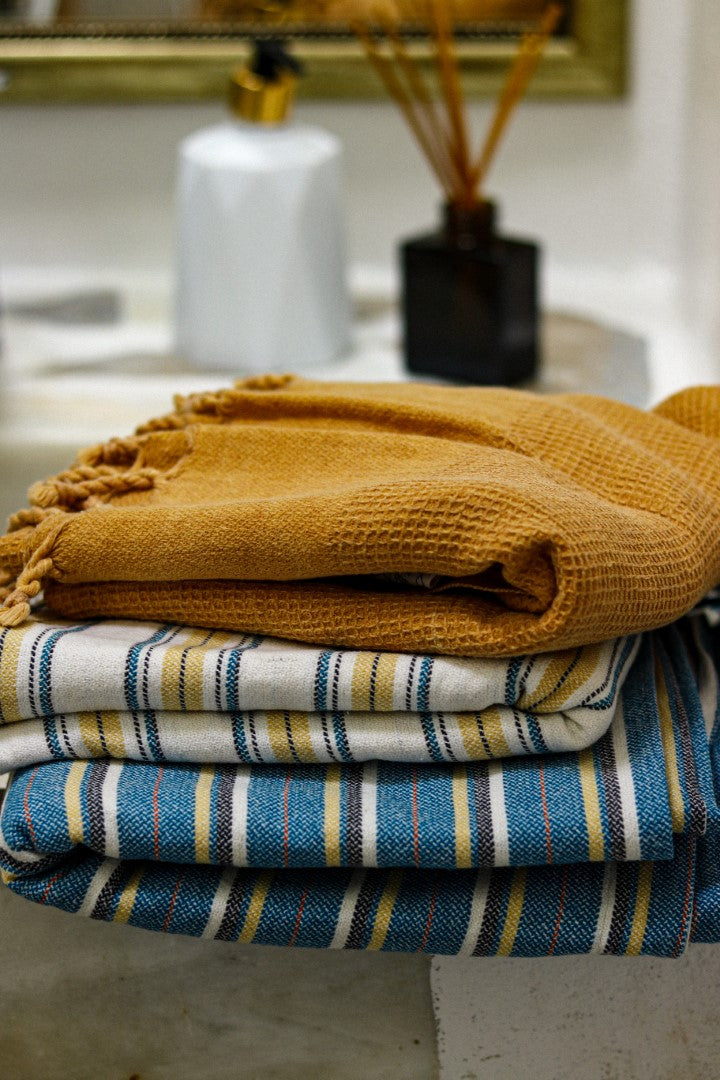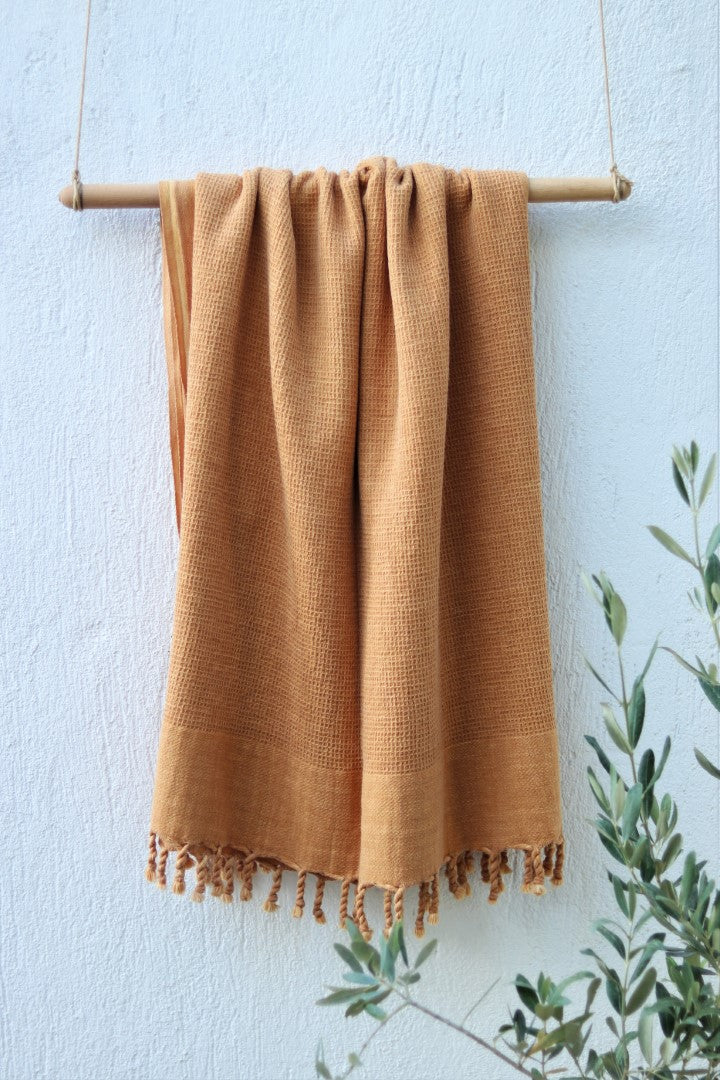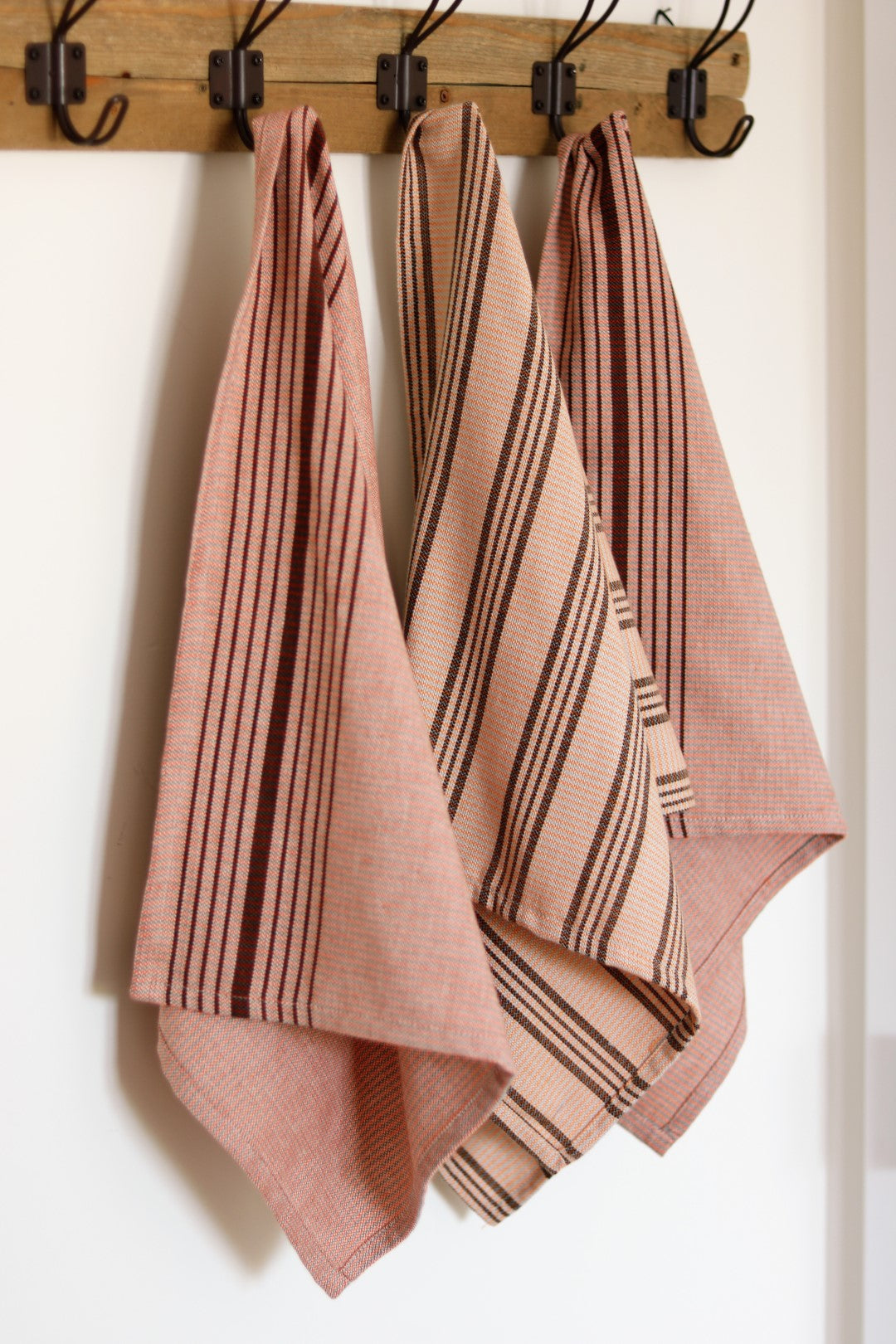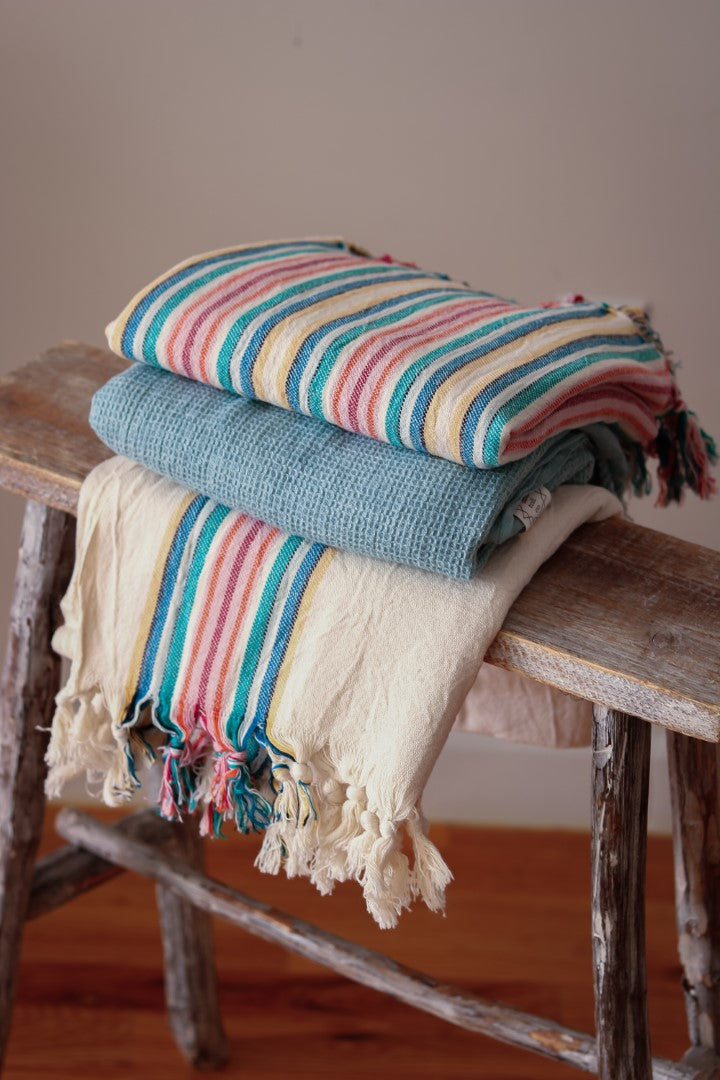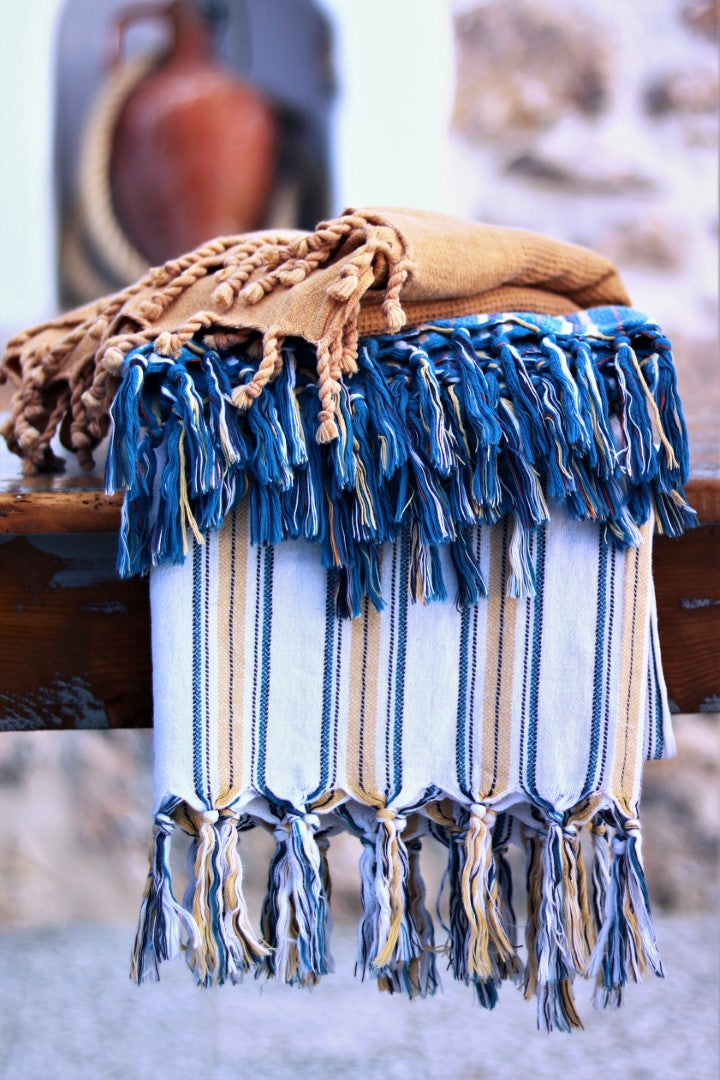Think of a beach cover-up kimono as the ultimate piece of wearable art for your seaside adventures. It’s a beautifully simple, open-front garment with flowy sleeves, designed to be tossed on over your swimsuit. It perfectly marries the timeless grace of a traditional Japanese robe with the laid-back vibe of resort wear.
The result? A go-to layer that takes you from the water's edge to a beachfront bistro without missing a beat.
Why the Kimono Is Your Ultimate Beach Essential
Picture this: one single garment that feels as incredible as it looks. That’s the magic of a beach kimono. It's so much more than just something to cover up with; it has transformed from a revered cultural garment into a worldwide symbol of relaxed sophistication.
Its signature features—a loose, forgiving fit, an open front, and wide, breezy sleeves—all come together to offer stylish coverage that never feels restrictive. You get to stay cool and comfortable while looking effortlessly put-together. It’s a piece that drapes beautifully, flattering all kinds of body types with its graceful movement.
This is where practicality meets polish. The kimono gives you that perfect blend of modesty and style, so you feel just as confident strolling along the shore as you do grabbing lunch with a view.
The Modern Resort Wear Icon
It’s no surprise that the kimono has become a staple in modern travel wardrobes. It simply ticks all the boxes for today’s traveler: versatile, stylish, and incredibly comfortable.
This trend is a huge part of the booming women's beachwear market, which hit a value of $16.44 billion back in 2021 and is on track to sail past $20 billion by 2025. That kind of growth shows a real shift in how we think about vacation style—resort wear isn't an afterthought anymore; it's central to the entire experience. You can dive deeper into these trends with market analysis from Fortune Business Insights.
A great beach cover-up changes everything. It’s the single item that pulls your whole vacation look together, letting you move seamlessly from a lazy day in the sun to a chic evening out. Nothing does this better than a kimono.
This little infographic perfectly captures the key elements that make the beach cover-up kimono such a must-have.
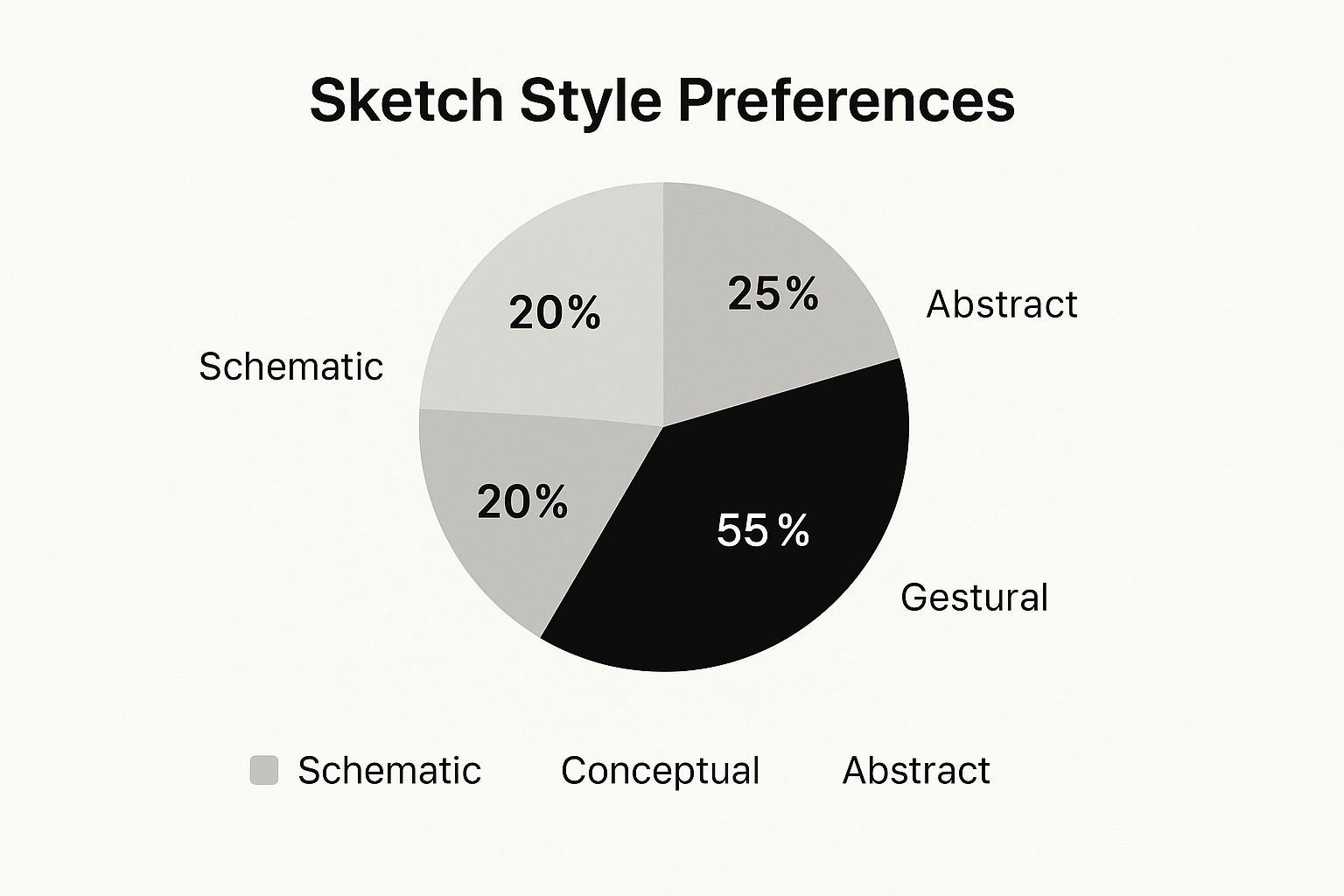
As the sketch shows, it’s all about how the open front and flowing shape create a vibe that's both completely relaxed and undeniably polished. It's this unique combination that has cemented its place as an essential piece for any sun-soaked getaway. True style, after all, is often found in simplicity and smart design.
Choosing the Perfect Fabric for Sun and Sand
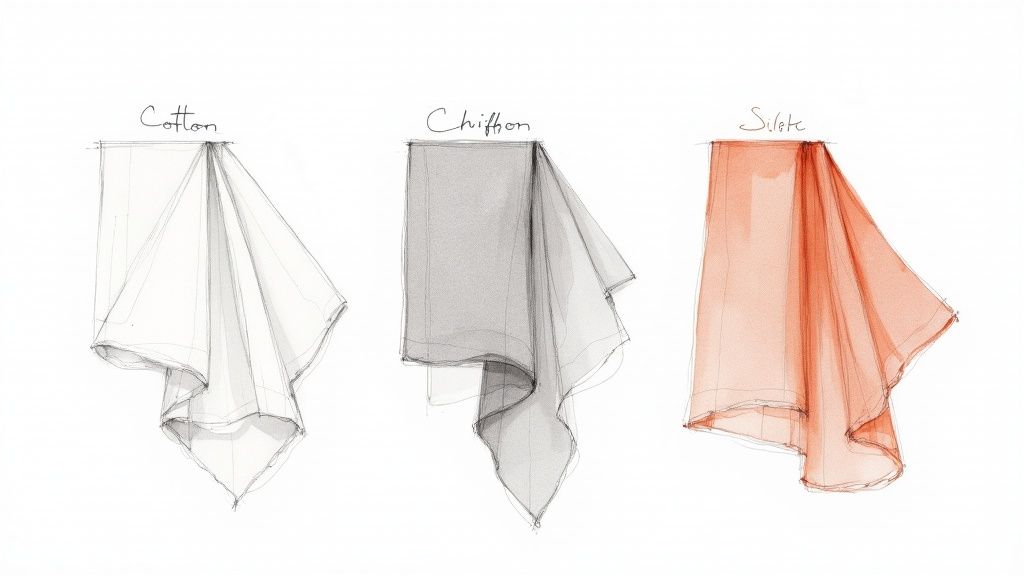
The look of a beach cover up kimono is what first catches your eye, but it's the feel of the fabric that truly makes you fall in love. The right material can make all the difference, turning a simple garment into a piece you’ll want to live in all summer long. Think of the fabric as the very soul of your kimono—it dictates how it breathes, how it drapes over your body, and how it stands up to a day of sun, salt, and sand.
Picking the perfect material isn’t about finding one single "best" option. It's about figuring out what you need. Are you after something that will dry in a flash after you've taken a quick dip? Or do you need a more elegant layer to throw on for a sunset cocktail? Each fabric brings its own unique personality to the party.
Everyday Comfort and Breathability
When you’re planning on wearing your kimono all day, breathability is absolutely essential. You want something that lets the air flow, keeping you cool when the sun is high. This is where natural fibers really shine.
- Cotton: You can't go wrong with this classic. A cotton kimono feels soft and gentle against your skin, making it a reliable, no-fuss choice for a laid-back day at the beach. It’s the comfortable old friend in your closet.
- Turkish Cotton: This is where things get a bit more luxurious. Famous for its extra-long fibers, Turkish cotton is not only incredibly soft and absorbent but also dries surprisingly fast. A kimono made from this premium material can even double as a light towel, making it a brilliant, space-saving pick for your travel bag.
- Rayon: Sometimes called "artificial silk," rayon gives you a gorgeous, flowing drape without the high price tag. It's wonderfully lightweight and smooth, though be warned—it can be a bit more prone to wrinkling.
Getting a feel for how different fabrics work in the heat is a game-changer. If you want to dive deeper, you can learn more about the science behind breathable fabrics for hot weather in our guide.
Ethereal Elegance and Quick Drying
Sometimes a beach day calls for a little more flair. For those moments, you want a fabric that feels special—something lightweight and sheer that creates a romantic, airy look.
A great beach kimono should feel like a whisper against your skin. It's that barely-there layer that provides just enough coverage without weighing you down, moving with you like a second skin.
Fabrics like chiffon and georgette are perfect for this. They are incredibly light and semi-transparent, creating a beautiful silhouette as the sea breeze catches them. Because they're synthetic, they also dry in the blink of an eye, so you'll never be stuck with a soggy cover-up.
For a touch of true luxury, nothing beats a silk blend. It offers an unmatched softness and a subtle, beautiful sheen that looks absolutely stunning in the golden hour light. It’s the perfect piece to take you from a day on the sand to an evening at the beachside bar.
How to Find a Flattering Kimono for Your Style
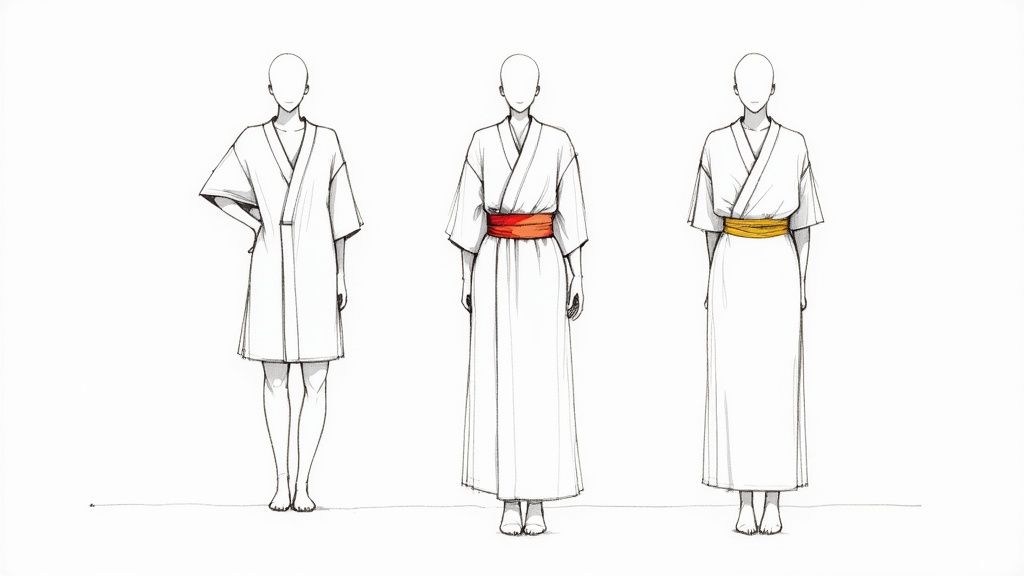
Finding the right beach cover up kimono is less about following strict rules and more about discovering what makes you feel amazing. The perfect one doesn't just cover your swimsuit—it elevates your entire look, flatters your shape, and shows off your personality. It’s that instant confidence boost you can throw on in a second.
Think about the vibe you're going for. A shorter, thigh-length kimono feels playful and carefree, perfect for chasing the kids down the shoreline or a game of beach volleyball. But a long, sweeping maxi kimono? That brings instant drama and elegance, turning heads as you walk to a poolside cabana or a beachfront bar at sunset.
Choosing Your Cut and Length
The silhouette you pick is what really sets the mood. An open, flowing kimono has that relaxed, bohemian feel, catching the sea breeze just right. It's a forgiving and universally flattering style that works on just about everyone.
If you prefer a little more definition, a belted kimono is your best friend. Cinching it at your natural waist instantly creates an hourglass shape, adding a touch of structure to a laid-back piece. That simple detail makes it polished enough to wear straight from the beach to dinner.
Your kimono’s length sets the tone. Short styles say "fun and carefree," while long, flowing cuts communicate "elegant and composed." The key is choosing the one that makes you feel most like yourself.
Picking the right kimono often comes down to what you'll be doing. The table below breaks down which styles work best for different body types and occasions, making it easier to find your perfect match.
| Kimono Style (Length/Cut) | Best For Body Types | Ideal Occasion | Styling Tip |
|---|---|---|---|
| Short (Mid-Thigh) | Great for petite frames or showcasing legs. | Active beach days, casual boardwalk strolls. | Throw it over denim shorts and a tank top for an effortless post-beach outfit. |
| Mid-Length (Knee-to-Calf) | Universally flattering; a safe bet for all shapes. | Family resort vacations, poolside lounging. | Provides a touch more coverage without feeling overwhelming. Looks chic with wedges. |
| Maxi (Ankle-Length) | Adds height to any frame; creates a long, lean line. | Beach weddings, sunset cocktails, upscale resorts. | Let the kimono be the statement piece. Pair with simple, elegant sandals. |
| Belted/Wrap Style | Excellent for creating or accentuating a waist. | Any occasion where you want a more defined silhouette. | Tie the belt at your natural waist to create a classic hourglass shape. |
Ultimately, the best style is the one that fits your life and makes you feel fantastic. Don't be afraid to try a few different lengths to see what you love.
Making a Statement with Prints and Colors
Once you've nailed down the cut, the fun part begins: choosing a color or print that screams you.
A kimono with a bold, vibrant pattern—think oversized tropical florals, a sharp geometric design, or a cool tie-dye—becomes the focal point of your outfit. It’s an easy way to inject pure energy and fun into your look. Just pair it with a simple, solid-colored swimsuit and let the kimono do all the talking.
On the other hand, a solid-colored kimono in a timeless shade like crisp white, classic black, or sophisticated navy offers endless possibilities. It's a chic, neutral canvas you can style a million different ways. Solid colors have an effortless, minimalist vibe that never goes out of fashion, letting your swimsuit and accessories shine.
Creative Ways to Style Your Beach Kimono
Don't let the name fool you—your beach cover up kimono is so much more than a one-trick pony. Of course, it's brilliant over a swimsuit, but its real magic lies in its adaptability. Think of it as your wardrobe's secret weapon, ready to transform an outfit with a little creative thinking.
The key is to stop seeing it as just a cover-up and start thinking of it as a go-to layering piece. It’s perfect for adding a splash of color, a hint of texture, or just a bit of breezy elegance that can take you from the sand to a last-minute dinner reservation.
From Beachfront to Town Square
The easiest way to get more mileage out of your kimono is by mixing it with your everyday clothes. A shorter, thigh-length kimono works beautifully here, almost like a light, unstructured jacket.
Picture this: After a morning at the beach, you're ready to explore the local market or grab a bite to eat. Just pull on a pair of high-waisted denim shorts and a basic tank top, then layer your open kimono over it. Instantly, you have a look that's chic, comfortable, and perfectly suited for a casual afternoon out.
- Accessorize Smart: A wide-brimmed straw hat and some espadrilles are all you need to finish the outfit.
- Play with Proportions: If your kimono is long and flowy, keep your shorts and top more fitted to create a nice, balanced shape.
- Cuff the Sleeves: A quick roll or cuff of the sleeves makes the look feel more deliberate and put-together.
Dressing It Up for an Evening Out
A longer, maxi-length kimono can be surprisingly elegant, especially if it's made from a fabric with a little bit of drape or sheen, like a soft rayon or silk blend. With the right styling, it easily becomes the star of your evening look, adding a touch of drama and beautiful movement.
For a simple yet stunning dinner outfit, try layering it over a slip dress or a pair of tailored linen trousers with a camisole. The kimono functions like a duster coat, offering a sophisticated layer that flows as you walk. To give yourself a more defined waistline, just add a thin leather or woven belt.
The secret to styling a kimono for evening is treating it like a statement piece. Let it be the star by keeping the rest of your outfit minimal and refined, allowing the fabric and print to stand out.
This is all about creating new silhouettes and seeing the possibilities in your wardrobe. While a kimono is an amazing cover-up, other pieces like pareos offer completely different styling options. If you're curious about different ways to wrap and tie beachwear, check out our guide on how to tie a pareo. And for more ideas on coordinating the perfect seaside look, especially for photos, you might find an ultimate guide to beach family photo outfits helpful.
Keeping Your Kimono Looking Beautiful, Season After Season
You've found the perfect beach cover-up kimono—it's an essential part of your vacation wardrobe. But a summer filled with sun, salty air, and sunscreen can be tough on any fabric. The secret to keeping it looking just as gorgeous as the day you bought it? A little bit of TLC.
Think of it this way: you wouldn't use the same cleaning method for a cast-iron skillet and a delicate wine glass. The same logic applies to fabrics. A sturdy cotton kimono might be fine in the machine, but a whisper-thin silk or rayon piece needs a much gentler approach.
The Right Way to Wash Your Kimono
Before you even think about washing, check the care label. Seriously, it's your fabric's instruction manual. If you can't find one, the safest route is always the most cautious one. For most kimonos, especially those made from delicate materials like rayon or silk blends, or with details like tassels and embroidery, hand-washing is your best friend.
-
A Simple Hand-Washing Guide:
- Grab a clean sink or basin and fill it with cool water. Add just a tiny drop of a gentle, pH-neutral soap.
- Place your kimono in the water and gently swirl it around. No aggressive scrubbing or twisting—that's how you damage the delicate fibers.
- Let it soak for up to 30 minutes, but not much longer.
- Drain the soapy water and rinse with fresh, cool water until it runs clear.
Now, if your kimono is made from something more durable, like a Turkish cotton, you might get away with using the washing machine. If you do, always opt for the delicate cycle with cold water, and pop it into a mesh laundry bag first to prevent any snags or pulls. We have a whole guide on this, and you can learn more about how to care for your Turkish towel to keep those textiles lasting for years.
Heat is the number one enemy of vibrant fabric. Never, ever use hot water or a hot dryer. It’s the fastest way to fade beautiful colors and can even shrink or ruin the material for good.
Drying and On-the-Go Care
Once it's clean, resist the urge to twist or wring out your kimono. Instead, gently squeeze out the extra water. A great trick is to lay it flat on a thick, clean towel, roll them up together, and press down gently to soak up more moisture.
Then, find a shady, breezy spot to lay it flat to dry. Keep it out of direct sunlight, which acts like a natural bleach and will zap the color right out of the fabric.
One last pro tip for when you're on the move: after a long day at the beach, give your kimono a quick rinse under some fresh tap water as soon as you can. This simple step gets rid of all that corrosive salt and chlorine before it has a chance to settle in, keeping your kimono ready for your next sunny escape.
The Global Rise of the Resort Wear Kimono
Have you ever noticed how the beach cover up kimono shows up in just about every stylish vacation photo you see? It’s everywhere, and that’s no accident. Its journey from a traditional piece to a must-have for any sunny getaway is a story about our collective desire for clothes that are as beautiful as they are versatile.
Modern travelers want pieces that pull double, or even triple, duty. A good kimono isn’t just for the beach. It’s the perfect lightweight layer for a breezy evening stroll, a chic wrap for a poolside lunch, or a pop of color over a simple tank top and shorts for exploring the town. This multi-functionality is exactly why we love it—it’s all about packing smarter, not harder.
From Niche Trend to Mainstream Staple
So, how did the kimono become such a big deal? You can thank social media and celebrity style. Once influencers and A-listers started wearing these flowing, elegant garments against stunning backdrops from Bali to the Amalfi Coast, the kimono was officially cemented as the ultimate travel essential. It quickly became the visual symbol for effortless, sun-drenched glamour.
And the numbers back it up. The luxury beach cover-up market is a serious player in the fashion world, projected to hit a valuation of around $4.29 billion by 2025. This steady growth is fueled by our demand for beachwear that is both stylish and comfortable, proving just how much we value these incredibly versatile pieces. You can dig deeper into the data on this expanding market from Archive Market Research.
The beach kimono marks a real shift in how we think about vacation style. It’s not just about the swimsuit anymore. It's about creating a complete, polished look that feels both relaxed and intentional.
Think about the places where this kind of style truly shines. When you picture yourself at one of the best beach hotels in Goa, you can almost see how perfectly a kimono fits into that idyllic, laid-back resort lifestyle.
Why Its Popularity Continues to Grow
The kimono isn't just a fleeting trend; it has real staying power, and that comes down to a few key things that make it so special.
- Universal Flattery: Its open front and flowing shape drape beautifully on every body type. It’s all about comfort and confidence.
- Effortless Style: You don't have to try hard to look put-together. Just throwing one on over a simple swimsuit instantly creates a thoughtful, chic outfit.
- Cultural Fusion: It beautifully blends the elegance of Eastern tradition with the free-spirited vibe of Western beach culture, resulting in a look that’s both timeless and globally appealing.
Ultimately, choosing to wear a beach cover up kimono is more than just a fashion choice. You're plugging into a bigger movement toward a sophisticated, easygoing style that feels every bit as good as it looks.
Got Questions About Beach Kimonos? We've Got Answers.
Even after you've got the styling down, a few practical questions always seem to pop up. Let's tackle some of the most common ones so you can choose, wear, and care for your kimono like a pro.
Can I Really Wear a Beach Kimono Away from the Beach?
Yes, absolutely! That’s the real magic of a great kimono—it's not just for the sand and surf.
Think of it as the most versatile layering piece in your wardrobe. A shorter one can be thrown over a simple tank and jeans for an instant style upgrade on a casual day out. If you have a longer, more elegant kimono, maybe in a rayon or silk blend, try layering it over a slip dress for a surprisingly chic evening look.
Your kimono is basically a lightweight, more stylish version of a duster coat. It's perfect for adding that finishing touch of color, pattern, and texture to an otherwise simple outfit.
What’s the Best Way to Pack a Kimono Without Wrinkling It?
Forget folding. The rolling method is your secret weapon here.
Start by laying your kimono out flat and smoothing it out. Fold the sleeves in toward the center, then roll it up snugly from the bottom hem. This simple trick helps prevent those deep, set-in creases that folding creates. If you're packing a particularly delicate fabric like silk, you can even place a sheet of tissue paper on top before you roll for an extra layer of protection.
Ready to find the piece that will completely elevate your style? Come discover the timeless, artisan-crafted collection at Anatolico and wrap yourself in a bit of effortless Mediterranean living.
Explore our full range of kimonos and more at our official Anatolico online store.

